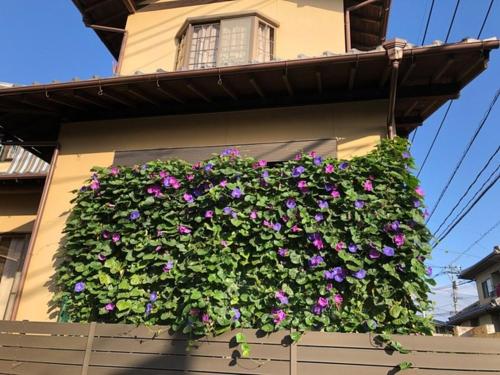Rokuden Jinja Shrine
menuMenu
Don't miss the gate, known as the "nail-less gate," the first structure in Kumamoto Prefecture to be designated as an Important Cultural Property of Japan!




Highlights
- The "nail-less gate" is a must-see!
- The gate, built in the Muromachi period, showcases exceptional craftsmanship with its nail-free construction.
- Its imposing presence, rich history, and beautiful vermillion paint are truly awe-inspiring.
- The grounds are filled with historic buildings, including the haiden and honden, providing a tranquil atmosphere.
- Numerous smaller shrines (massha) are scattered throughout, including those dedicated to childbirth and safe delivery, and scholarship.
Basic Information
- Address
- 2378 Kiwara, Tomiai-machi, Minami-ku, Kumamoto City, Kumamoto Prefecture Rokuden Jinja Search for tourist attractions in Kumamoto
- Access
- Approximately 15 minutes by car from Tazaki Station on the JR Kagoshima Main Line Show route
- Op.Hours
- 9:00 AM - 5:00 PM
- Cld.Days
- Open every day
- Fee
- Free
- INFO
- Parking available
Overview
Recommended nearby attractions
Yachiyoza Theatre

A wooden theater built in the Meiji era, designated as an Important Cultural Property of Japan.
Aso Shrine

A historic shrine, a symbolic presence in Aso, surrounded by magnificent nature.
Nagao Tsurugi Jinja Shrine

Stunning views of a torii gate seemingly floating on the sea and breathtaking sunsets!
Reigan-do Cave & Un'ganzenji Temple

A sacred place where Miyamoto Musashi wrote *Go Rin No Sho*! Be awestruck by the mystical cave and the impressive five hundred Rakan statues.
Reidaibashi Bridge

Built to transport stone materials during the construction of Kumamoto Castle, this bridge exudes a historical charm.
Kamishikimi Kumanoza Shrine

A mystical shrine featured in the anime film *Hotarubi no Mori e* (Into the Forest of Fireflies). Nestled in a lush forest, it feels like a gateway to another world.
Rengein Danjoji Temple, Oku-no-in

Be awestruck by the sound of the world's largest bronze bell, "Hiryu no Kane," and enjoy the breathtaking view from the five-storied pagoda!
Yatsushiro Castle Ruins

Explore the magnificent ruins of a flatland castle built by Kato Tadahiro, the second son of Kato Kiyomasa! Take a stroll through the remaining stone walls and moats, and ponder the weight of history.
Jinda Koji Important Preservation District for Groups of Traditional Buildings

Jinda Koji, where the townscape of the Edo period remains vividly, is a tranquil and atmospheric place. The stone walls of the samurai residences, the arrow bamboo hedges, and the waterways are beautiful, offering a feeling of stepping back in time.
Kyu-Gunchiku Shinchi Ko-go Higomon (Old Gunchiku Shinchi No. 1 Sluice Gate)

A historically significant reclamation site built in the Meiji era.
Nearby Hotels
Good Inn Matsubase

Comfort Inn Kumamoto Miyukifueda

Comfort Inn Kumamoto Miyukifueda

Hotel New Gaea Nishikumamoto-Ekimae

Ukishimakan Bettei Guest House - Vacation STAY 14350

HOTEL R9 The Yard Uki

The Legato Inn MIFUNE

Tsukigakireidesune

KOTO TEA HOUSE - Vacation STAY 12837

KOTO TEA HOUSE - Vacation STAY 12808

